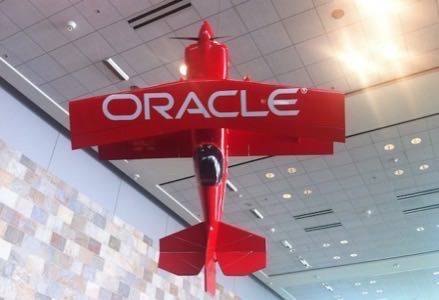
For Oracle CEO Larry Ellison, cloud computing seems to mean whatever he says it means. During his packed keynote address Sunday at the company’s Oracle OpenWorld conference in San Francisco, Ellison announded four major cloud initiatives for businesses, including Oracle Private Cloud, which puts “the cloud” inside customers’ own data center.
At least that’s how Larry described it.
Oracle Cloud Adds Infrastructure-As-A-Service
In addition to the Oracle Private Cloud, which can hardly be described as the cloud, no matter how it’s sold (more on that later) Ellison said that Oracle will provide infrastructure-as-a-service (IaaS) cloud computing.
That service is aimed directly at Oracle, not IBM, according to his presentation. He didn’t specify pricing or availability, or how Oracle would compete with other IaaS providers — like Amazon and Google — which have built offerings on spare computing capacity that they has built for other purposes. Instead, he talked about how running the Oracle Cloud on its own hardware and software would make it the fastest around.
Oracle’s Multi-Tenant Database
Ellison also debuted 12c, a multi-tenant database, due next year, which he claimed uses an entirely new architecture to run multi-tenant databases within a “container” database.
Ellison has long dismissed multi-tentancy for applications, but said that multi-tenant databases provide a private database for each uses, and that it works with all standard database security features.
When it arrives in 2013, 12c will run five times as many databases on one-sixth the hardware, Ellison said, making it a perfect fit for software-as-a-service providers.
X3 Puts Databases In Memory — All Of Them
Finally, Ellison unveiled Exadata X3, which he called hardware for the Oracle Cloud. The big innovation here, Ellison said, is that the X3 database machine puts everything in memory (up to 26 terabytes of DRAM and flash memory).
“You virtually never use your disk drives,” he said.
Aimed squarely at SAP’s HANA in-memory database, Ellison claimed that the X3 was much bigger.
“It’s not a database in memory,” he said, “but all your databases in memory.” The starting price will be less than $200,000.
When Is The Cloud Not The Cloud?
But let’s get back to the Oracle Private Cloud, which seems to defy many of the key conventions of cloud computing. Sure, enterprises have been using so-called private clouds for years, which basically means using cloud-like principles to run their own data centers.
The Oracle Private Cloud, just outsources that job to Oracle, which places its own infrastructure on the client’s premeses, behind the client’s firewall. Because Oracle owns, maintains and upgrades that infrastructure, Ellison said, it’s still “the true cloud.”
No, it’s not.
Just because you pay for what you use by the month, it’s not the true cloud. It’s a set of dedicated outsourced resources.
Sure, Oracle attempts to estimate what resources a customer needs, and installs extra capacity to meet peak needs. (And Ellison alluded to the possilbity of using the regular Oracle Cloud for backup or disaster recovery — since the products use the same architecture.)
But that’s a long, long way from the true nature of cloud computing — which is all about improving use and cutting costs by giving buyers as-needed access to a portion of a much larger pool of shared resources. Ellison paid lip service to the value of cloud computing’s utility model, which lets IT execs buy computing power just like they buy electrical power, but the Oracle Private Cloud is more like paying the electric company to put a power plant in your office building.
Putting a dedicated chunk of hardware and software on your site and calling it the cloud makes a mockery of the very concept of cloud computing — and eliminates cost-cutting through shared resources. But given Larry Ellison’s history of mocking cloud computing, that may be the point.
Image by Fredric Paul.
















